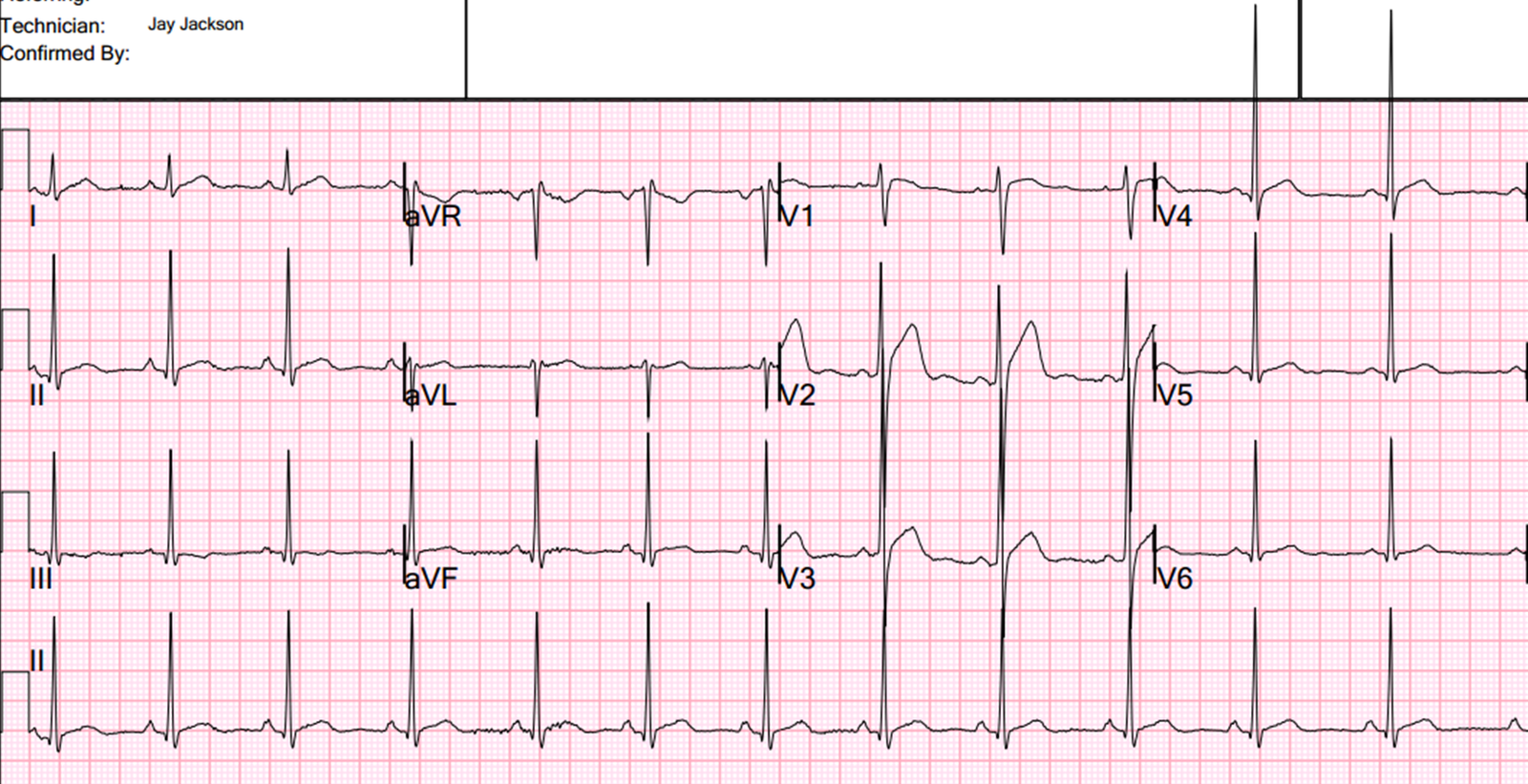What is wrong with this patient who complains of weakness?
 |
| PR is 224 ms, QRS 177 ms. Answer below |
Answer: HyperK. You must be able to recognize this immediately if you take care of patients in EMS or the ED.
3 grams of Calcium gluconate, 100 mEq of bicarbonate, 10 units of regular insulin, and 50g of D50 were given immediately after reading the ECG.
Then this ECG was recorded:
 |
| QRS is now 117 ms |
30 minutes later, the lab reported a K of 7.2 mEq/L.




Dr Smith,
What are your thoughts about the use of Bicarb for hyperK in the pre-hospital environment?
thanks,
DaveB
It is the least effective of the therapies but unless there is volume overload it should be safe. Calcium is by far the most important for prehospital, though.
Steve
Will HyperK only show up in a 12 lead and if so, could it be in any of the leads.
It is easiest to see in leads V2-V4. so put your MCL1 lead over the apex of the heart, or a little higher, and you will see it best
I think I see reverse tick – patient on digoxin?
What about using about albuterol?
No. Just hyperK.
Oh one more did you do labs prior to intervention or did you treat strictly based on EKG and HX?
My service, nor any in this area, carry insulin. Our protocols allow us to treat hyperkalemia with calcium chloride 1G, D50 25G, and Sodium Bicarb 1mEq/kg but, that's only in cardiac arrest. What are the pitfalls of not administering insulin in this treatment cocktail?
Insulin and glucose are the slowest acting of the codktail. It is adequate that you carry calcium chloride. 3g of Ca gluconate = 1 g of Ca chloride.
Treated based on the EKG
Yes, albuterol works well!
T waves high, pointed, increased QRS duration fae must think of an increase in blood levels of potassium.
hyperkalemia.
Risk situation, can trigger dangerous arrhythmias.
Treatment should be initiated without waiting for the outcome of blood tests
Thanks Dr. Smith.
Vittorio Masciulli
What happened afterwards? Did the patient receive dialysis or did he improve on conservative treatment alone? At out hospital a potassium over 7 always gets dialysis (sometimes also over 6), so I don't have much experience with the alternatives beyond the very acute situation.
She had renal failure and underwent dialysis immediately.
Hi, what is D50? And 100 mEq of bicarbonates how many mg or in ml. Thnx
D50 is 50% Dextrose. 100mEq of bicarbonate was given as 100 ml of 1mEq/ml (8.4% solution).
When the QRS is widened, is it the Calcium treatment that narrows it, or is it the insulin/bicarb?
Thanks
Stefan
Calcium works fast (but not by lowering K). Bicarb fairly fast but not very effective. Insulin takes up to an hour and actually lowers the K. So all narrow it.
what if the patient came with blood glucose 99 with blood stick test?3 hours later,one of my patient keep having hypoglicemia, 48 then 66.should i stop insulin treatment.thanks doc
widya
You can always treat low glucose with more glucose!! We use extremely high doses of insulin for overdose of beta blockers and calcium channel blockers, and maintain glucose with glucose infusions.
Dr. Smith,
are these sine wave seen on ecg
Amita,
No sine waves really look like sine waves. I'll post one soon.
STeve